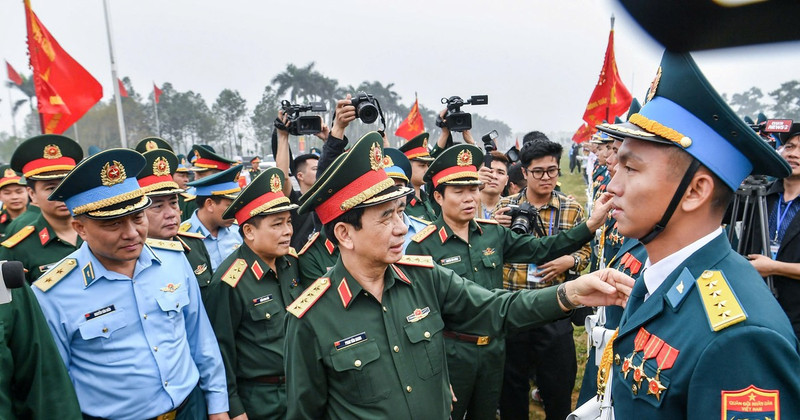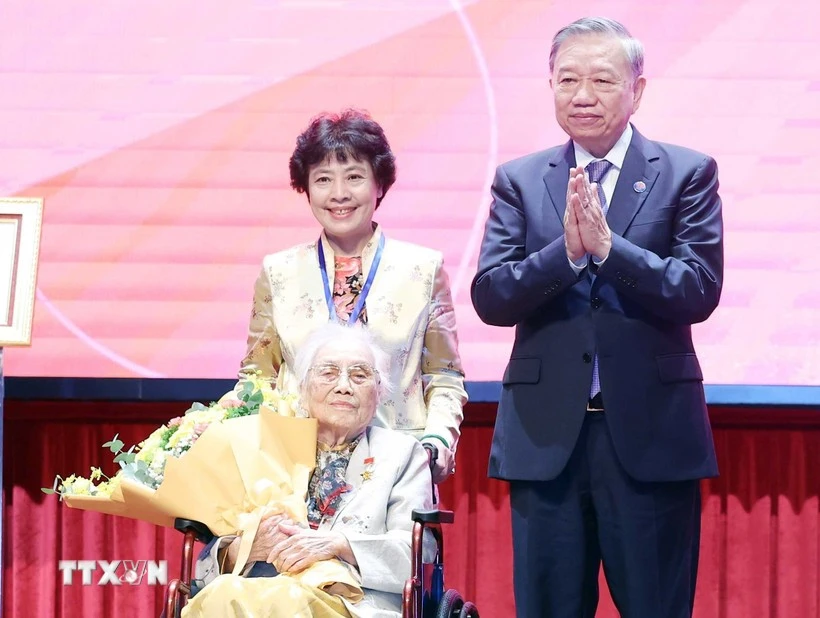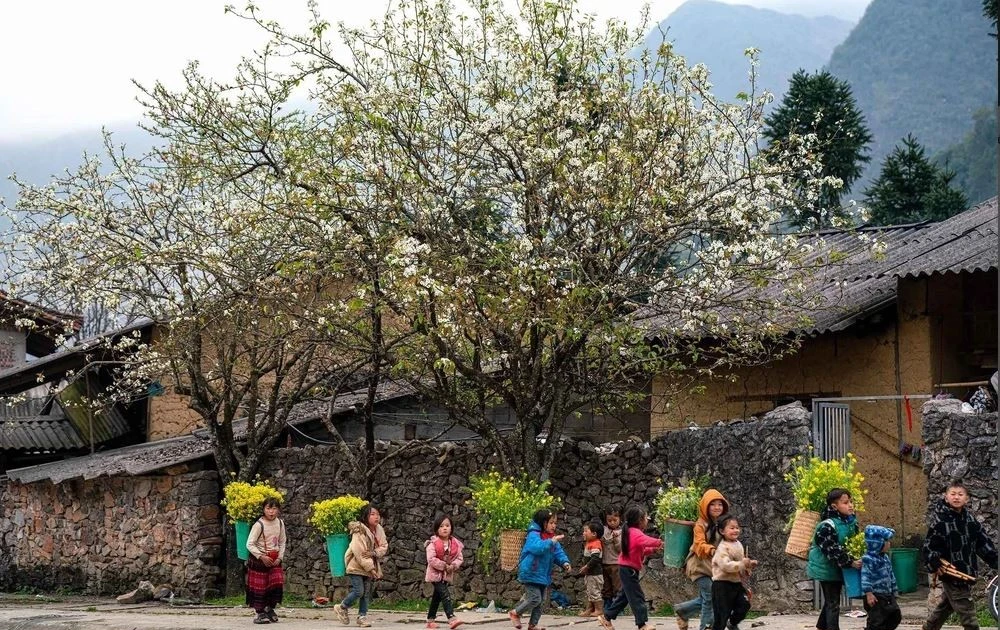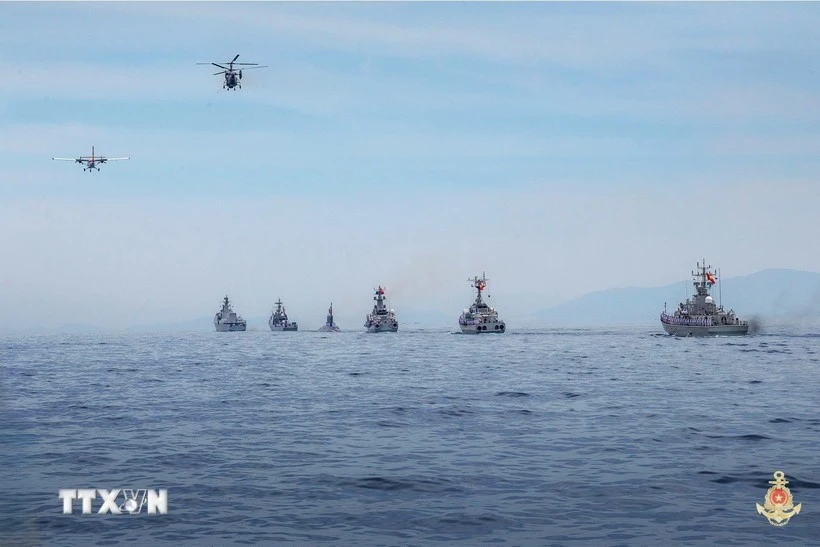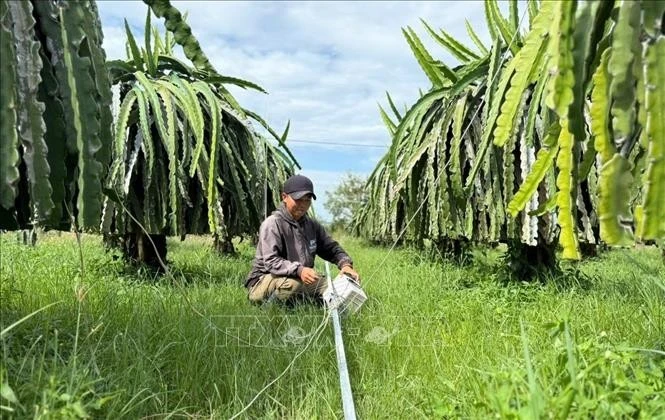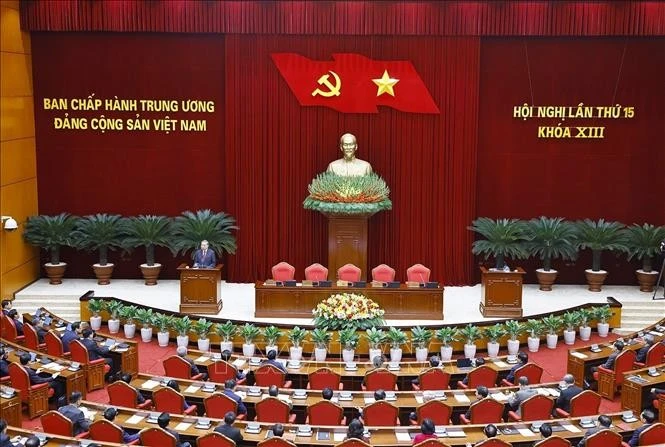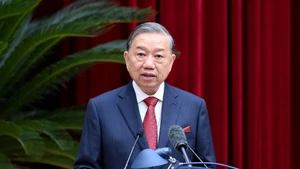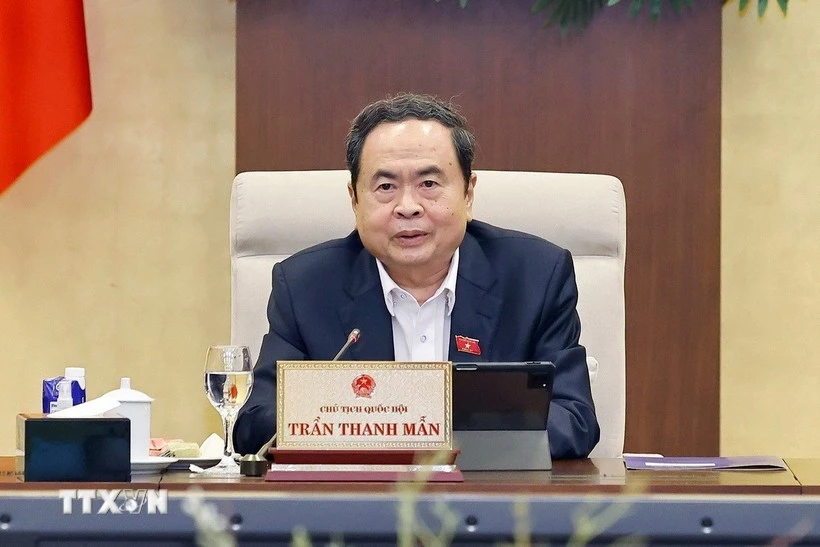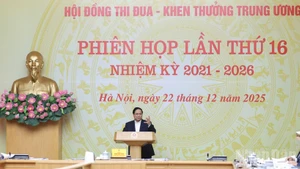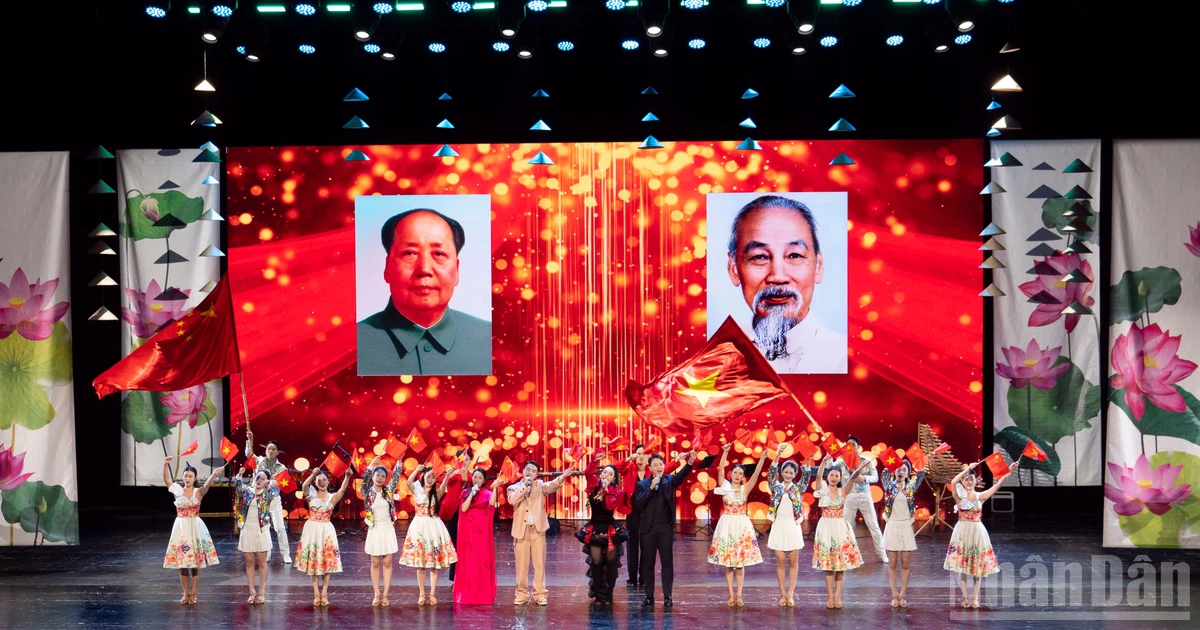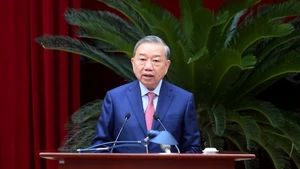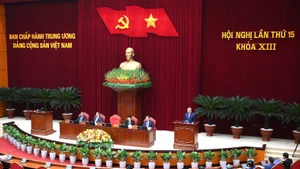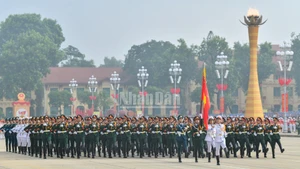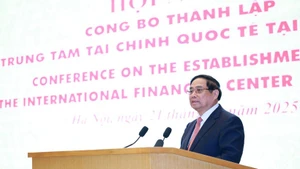Over the past 50 years, building on the achievements and lessons of the Great Spring Victory of 1975, the entire Party, people, and armed forces of Vietnam have been uniting in will and action, steadfastly pursuing the goals of national independence and socialism, advancing the cause of renewal, building and firmly safeguarding the Socialist Republic of Vietnam, and achieving remarkable accomplishments.
Firstly, maintaining and strengthening the absolute, direct, and comprehensive leadership of the Party over the military and the cause of national defence and homeland safeguarding in the new context remains essential.
With strategic determination from the Politburo, the Central Military Commission, and the High Command forcefully implemented the plan of operations and, together with the people, secured continuous victories during the Central Highlands Campaign and the campaigns to liberate Hue and Da Nang. These victories significantly shifted the balance of forces in our favour. On March 25, 1975, the Politburo made the strategic decision to completely liberate Saigon and the South before the rainy season (in May 1975). With the spirit of “one day equals twenty years,” the military and people nationwide poured all their efforts and highest determination into seizing the strategic opportunity, ultimately securing a decisive victory in the Ho Chi Minh Campaign and ending the resistance war against the US for national salvation.
Today, the Party and Government are resolutely directing a breakthrough in institutional building and perfection, creating strong momentum for national development in the new era. In this context, it is even more imperative to firmly uphold the principle of the Party’s absolute, direct, and comprehensive leadership over the Vietnam People's Army and the cause of national defence and homeland protection.
Accordingly, the Ministry of National Defence must intensify theoretical research and development, summarise practices, and provide strategic recommendations to improve mechanisms, institutions, and policies aimed at maintaining and strengthening the Party’s leadership and the centralised and unified management of the State over the cause of building a revolutionary, regular, elite, and modern People’s Army. This includes fully and synchronously institutionalising the Party’s viewpoints and guidelines, and perfecting the legal framework for building an all-people national defence closely linked with the people's warfare posture. It is essential to build a “people's heart posture” to safeguard the Fatherland in the new context in line with the development of practice, particularly the ongoing restructuring of provincial-level administrative units, the non-establishment of district-level units, and the merging of commune-level administrative units.
Secondly, it is crucial to promote the comprehensive strength of the great national unity bloc to build a strong, independent, and self-reliant all-people national defence.
To achieve the Great Spring Victory in 1975, the entire Party, people, and army stood united with the determination that “everything is for the frontlines, everything is to defeat the American aggressors”. The North made immense contributions, sending more than 110,000 officers and soldiers to the South; providing 230,000 tonnes of various supplies, including 81% of weapons, 60% of fuel, 65% of medicine, and 85% of vehicles. On the great Southern front, the National Liberation Front of South Vietnam vigorously advanced political struggles across all three strategic regions. At the same time, the front mobilised the people to join the three-tier armed forces, established combat villages and communes, and organised resistance against the enemy anytime and anywhere.
In the current period, to strengthen the power of the great national unity bloc in the new context, it is essential to thoroughly grasp and effectively implement the principle that “the people are the root”. It is important to actively participate in disseminating information that clarifies the opportunities, advantages, and challenges for the nation in the new era, as well as the guiding ideology, strategic orientations, major policies, and political determination of the Party and General Secretary To Lam. This will help awaken and promote the spirit of “self-reliance, confidence, independence, resilience, and national pride”, reinforce public trust in the leadership of the Party, and mobilise the comprehensive strength of the entire people in the cause of national construction and defence. The military must take a proactive and active role in building the grassroots political system, assisting people in poverty eradication, disaster prevention, response and recovery, and building a strong “people’s heart posture”, especially in strategic and key areas, difficult regions, border and island zones, remote and isolated areas, and key economic zones. At the same time, the military must be at the forefront of resolutely combating the plots and tactics of hostile forces seeking to undermine the great national unity bloc and divide the bond between the people and the Party, the State, and the armed forces.
Thirdly, efforts must be focused on building a revolutionary People's Army as the core force in the cause of national defence and protection of the Socialist Republic of Vietnam.
Leading the nation through prolonged resistance wars against foreign invaders, our Party has always skillfully seized opportunities and mastered the rules of ending wars with powerful military offensives. With the strength of large-scale joint operations involving multiple arms and services, the mobile main-force corps coordinated closely with other units to penetrate deep into the heart of Saigon and eliminate key targets. This, in combination with the uprising of the masses, successfully fulfilled the historic mission of national liberation and reunification.
Given the current demands and tasks of building the army and defending the Fatherland in the new context, the entire military must continue to thoroughly grasp the Party’s military and defence guidelines. The focus is on building a comprehensively strong People's Army with high overall quality, strong combat capacity, and readiness to undertake and fulfil any assigned mission. Efforts must be intensified to streamline and modernise the military’s organisational structure to be more compact, elite, and effective. Simultaneously, the entire army needs to fully grasp and effectively implement the Politburo's Resolution No. 57-NQ/TW dated December 22, 2024, and the Central Military Commission’s Resolution No. 3488-NQ/QUTW dated January 29, 2025, on breakthroughs in science, technology, innovation, and digital transformation. These are seen as essential conditions for building a modern military today. It is essential to build a defence industry that is proactive, self-reliant, dual-use, and modern, as well as capable of consistently providing sufficient, high-quality weapons and technical equipment, including modern systems, for units in training, combat readiness, and missions to protect the seas, islands, borders, and cyberspace.
Fourthly, theoretical research on national defence and the development of Vietnam’s military science and arts must be promoted to meet the tasks of strengthening national defence and protecting the Fatherland in the new context.
The victory of the resistance war against the US for national salvation was the result of inheriting, applying, and creatively developing Vietnam’s military science and arts in the Ho Chi Minh era. The harmonious combination of the Party's sound leadership, the spirit of autonomy, self-reliance, strategic offensive thinking, and the effective mobilisation of the overall strength of the army and the people—together with the just strength of the revolutionary war, formed a unique military art that led to the historic Great Spring Victory in 1975.
From the realities of recent military conflicts worldwide, warring parties’ application of the achievements of the Fourth Industrial Revolution, particularly in military science and technology and artificial intelligence, has given rise to new forms of warfare, new methods and tactics in both traditional and non-traditional fields, posing threats to global peace, stability, and security. In this new context, the entire military must continuously heighten revolutionary vigilance, closely monitor developments in the strategic landscape, accurately assess situations, and respond promptly to defence-related scenarios, avoid being passive or surprised.
It is essential to proactively advise the Party and State on adjusting the force disposition and stationing of suitable main-force units. The army must continue to play a core role in building solid and in-depth defensive zones at all levels, especially in military regions. Proactive and balanced allocation of resources must be ensured to build the potential and posture of both defensive zones and civil defence, ready for all national defence and security scenarios. Focus should be placed on researching the application of military science and technological advancements to develop theories on national defence, military arts, and the art of people’s war for defending the Fatherland in the new context.
Fifthly, national strength should be combined with the strength of the times; international integration and defence diplomacy should be enhanced towards proactively protecting the Fatherland early and from afar, safeguarding the nation before danger arises.
During the resistance war against the US, and particularly in the Great Spring Victory in 1975, the Party always stressed the close combination of national strength with the strength of the times, the integration of military, political, and diplomatic struggles to create a comprehensive strength that defeated the invading enemy. Through a creative diplomatic strategy, the Party was able to mobilise support from socialist countries, the three Indochinese nations, and progressive peoples around the world, thus creating a favourable position and strength for our struggle and ultimate victory.
At present, international integration and defence diplomacy are among the key pillars of the Party's foreign relations, the State’s diplomacy, and people-to-people diplomacy aimed at proactively safeguarding the Fatherland early and from afar and preserving peace before threats arise. It is important to promote bilateral and multilateral defence relations and cooperation in a deep and substantive manner; to prioritise relationships with neighbouring countries, major powers, strategic partners, ASEAN countries, and traditional friends. Defence cooperation with partners must be well-managed to ensure strategic balance, enhance trust, and intertwine mutual interests. It is also crucial to maximise the use of external resources to strengthen our national defence potential and the posture of all-people defence, thereby maintaining a peaceful and stable environment for national development.
The Party’s foreign policy and President Ho Chi Minh’s diplomatic thought must be applied creatively and effectively, upholding strategic principles while remaining flexible and skilful in tactics. Vietnam resolutely and persistently resolves conflicts, disputes, and disagreements through peaceful means, based on the principles of the United Nations Charter and international law, avoiding confrontation, isolation, and dependence; it remains steadfast in pursuing the “bamboo diplomacy” style and the "four no's" defence policy. Furthermore, Vietnam actively and proactively participates in United Nations peacekeeping forces and international humanitarian activities, affirming the role, responsibility, and enhancing the prestige and position of the country and the military on the global stage.
Half a century later, it can be seen the great stature, enduring values, and profound significance of the Great Spring Victory in 1975 as well las the sound and creative leadership of the Party and President Ho Chi Minh, as well as the great sacrifices made by the entire army and people throughout more than two decades of protracted resistance. The lessons drawn from the Great Spring Victory in 1975 remain deeply relevant and must be inherited, further developed, and creatively applied in the cause of safeguarding the Socialist Republic of Vietnam. These lessons will help to create a peaceful and stable environment for the country to firmly advance into a new era of development, prosperity, civility, and lasting progress.
